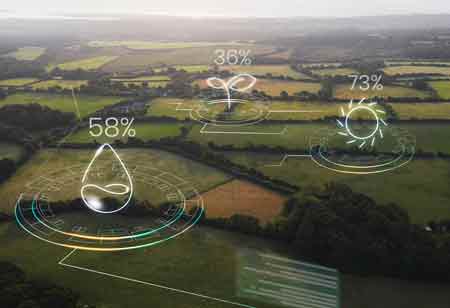Thank you for Subscribing to Agri Business Review Weekly Brief
Ways Biostimulants Promote Eco-Sustainability
Research is gaining new knowledge about how biostimulants support and improve crop growth. Their place in the future of agriculture appears very promising and even indispensable.

By
Agri Business Review | Tuesday, February 18, 2025
Stay ahead of the industry with exclusive feature stories on the top companies, expert insights and the latest news delivered straight to your inbox. Subscribe today.
Fremont, CA: Biostimulants heavily influence the current agricultural shift. These innovative compounds have shown great promise in improving crop health, growth, and resilience in diverse conditions. As awareness of the numerous advantages biostimulants offer increases among farmers, there has been a heightened emphasis on achieving sustainable agricultural practices. The shift is elevating the standards within modern agriculture.
Promoting Vigorous Growth and Development
The most attractive feature of biostimulants is enhanced nutrient use efficiency in plants. This important mode of action largely supports good growth and development. In addition, there is a significant yield increase in agricultural produce, quality improvement, and resistance to unfavorable environmental conditions.
Stress Resistance
Drought, high temperatures, and salinity are examples of abiotic stresses faced by modern agriculture. Biostimulants trigger the plant to produce compounds that may be needed for defense against stress. They trigger plant metabolism, enabling it to build resistance against such adversities and to thrive.
Stimulation of Root Growth: A Health Basis
Plants derive all their vital nutrients and life-giving water from their roots. Biostimulants stimulate the roots of the plant for better growth, enhancing the overall well-being of the plant. Due to the much-improved root activity, the plants start to grow stronger and healthier.
Disease and Pest Warfare with Improved Resistance
Another big advantage of using biostimulants is that they facilitate a plant's natural defense against diseases and pests. By not directly attacking the pests and sicknesses themselves, the biostimulant decreases a plant's sensitivity to certain infections and their infestation by building its inner strength.
Feeding the Soil for Future Crops
The application of biostimulants impacts the soil on which the plant is being grown and also on the plant itself. It helps create a more fertile, well-structured soil with an increased number and activity of beneficial microbes, hence tending to create a good growth cycle for subsequent crops.
Maximum Efficiency through Fertilizers
Another important characteristic of biostimulants is their ability to optimize fertilizer use. They enhance the plant's efficient nutrient uptake and metabolism capability, potentially reducing the fertilizer requirement without decreasing yield levels.
Reducing Environmental Impact
Significantly, biostimulants can decrease the environmental footprint of traditional farming practices. Introducing these materials further reduces the use of artificial pesticides and fertilizers that form the basis for healthy ecosystems. This objective is in tune with the extended objectives of sustainable agriculture.
The increased usage of biostimulants in agriculture heralds a new frontier for farming without compromising yield and honoring environmentally compatible farming practices. In fact, biostimulants and similar sustainable alternatives could well become necessary for continuing the world's food needs into the future without harming the environment.





